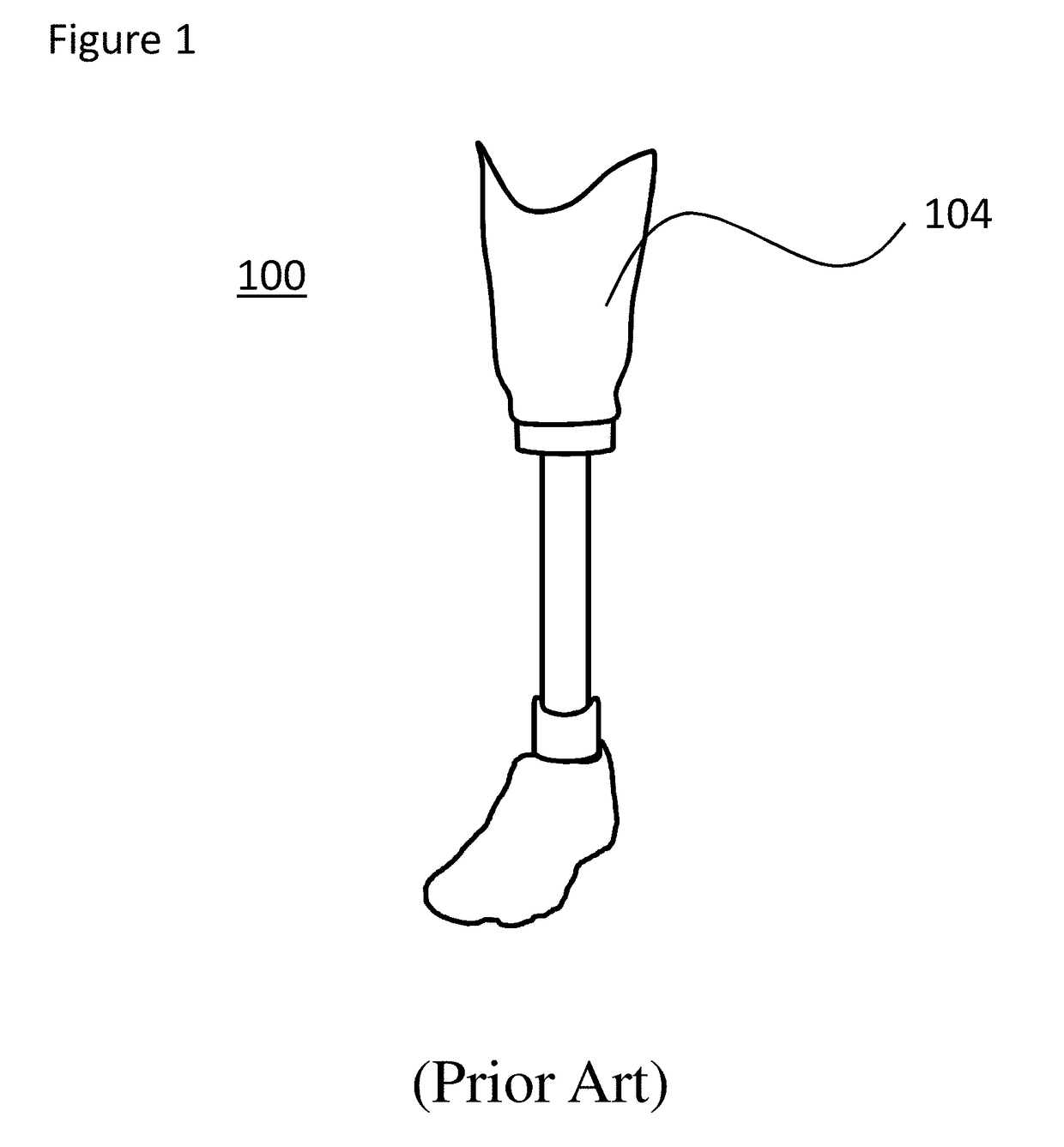Two-part prosthetic socket and method of making same
a prosthetic and socket technology, applied in the field of two-part socket assembly, can solve the problems of requiring new sockets, requiring weeks or more of labor, and residual limbs may build muscle and/or parts of residual limbs may change shape,
- Summary
- Abstract
- Description
- Claims
- Application Information
AI Technical Summary
Benefits of technology
Problems solved by technology
Method used
Image
Examples
example 1
Scanning to Identify Location of Pain in Prosthesis Use
[0080]In a first attempt to test whether CT-scan data can aid in the development of a better-fitting socket, we obtained low-dose, cone-beam CT scans from a 52-year old male who experienced a traumatic injury necessitating a transfemoral amputation 2.5 years prior to the scans. The patient experienced pain daily with use of his prosthesis, which started after a few hours of wear and increased throughout the day. The low-dose, cone-beam CT scans were obtained (CurveBeam) with the patient in non-weight bearing and full weight bearing position with the prosthetic inner socket and outer socket in place. Full weight bearing was a static condition meant to simulate pressures during normal gait. A small metallic marker (BB) was physically placed on the site of pain as indicated by the patient to mark the site on the CT scan. Data analysis: DICOM images were post-processed to reduce noise, and loaded into DICOM-viewing software (Osirix)...
PUM
 Login to View More
Login to View More Abstract
Description
Claims
Application Information
 Login to View More
Login to View More - R&D
- Intellectual Property
- Life Sciences
- Materials
- Tech Scout
- Unparalleled Data Quality
- Higher Quality Content
- 60% Fewer Hallucinations
Browse by: Latest US Patents, China's latest patents, Technical Efficacy Thesaurus, Application Domain, Technology Topic, Popular Technical Reports.
© 2025 PatSnap. All rights reserved.Legal|Privacy policy|Modern Slavery Act Transparency Statement|Sitemap|About US| Contact US: help@patsnap.com



